Walkabout: The Cemetery of the Evergreens, Part 1
My walking tour of Cypress Hills and Highland Park this past weekend has given me a wealth of information for my columns, and I don’t want to tell it all at once, but this cemetery is just too interesting to hold onto for too long. Hopefully, my little introduction will entice readers to take a…
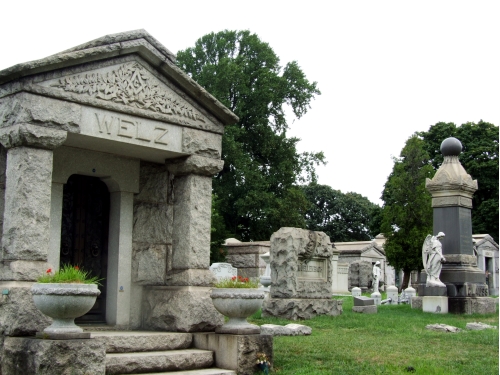
My walking tour of Cypress Hills and Highland Park this past weekend has given me a wealth of information for my columns, and I don’t want to tell it all at once, but this cemetery is just too interesting to hold onto for too long. Hopefully, my little introduction will entice readers to take a trip to this neighborhood and check it out for themselves. Like the much larger and more famous Green-Wood Cemetery, The Cemetery of the Evergreens, as it is officially called, is one of our borough’s great park cemeteries; a place where people went to not only visit their departed loved ones, but enjoy the beauty of nature, take in the views and vistas, and relax in a restful glen or bower. For space-starved Victorians of all incomes, this free park was a restful place to experience nature and art, and it was a popular tourist attraction, just like Green-Wood.
The great park cemeteries of America had their birth at Mount Auburn Cemetery, near Boston, established in 1831. Before that time, cemeteries were most often in churchyards or on private land. Taking their cue from English landscape design, the American rural or park cemeteries were designed to be a carefully planned “domesticated landscape,” where natural features like hills, trees and lakes were augmented by winding roads and paths, and the planting of trees, flowers and shrubs. And, of course, tombstones, mausoleums and monuments.
The park cemetery was a popular success, fueled in part by the Romantic era in literature, music and art; when prose and poetry painted pictures of castle ruins on a rocky hill, and mourning maidens draped in wind-swept shawls and trailing gowns wept over their lost loves. This would not be the first time that popular culture has affected our physical environment, and you can see that imagery and imagination in some of the monuments.
Five years after Mount Auburn opened, there were at least six other park cemeteries being developed across the country, including Green-Wood Cemetery here in Brooklyn, which was opened in 1838. More soon followed. The Cemetery of the Evergreens was established here, on the Brooklyn-Queens border, in 1849, and nearby Cypress Hills Cemetery, which is actually more in Queens, but often confused with Evergreens, was established a year earlier, in 1848. Both were established as non-sectarian cemeteries, which meant they accepted people of all faiths and persuasions.
Two years before Evergreens opened, the New York State Legislature had passed the Rural Cemetery Act, which was designed to authorize commercial burials in the state. That meant that people would no longer be buried in churchyards or in the backyard garden, but would have to be buried in tax-free land set aside for cemeteries, outside of cities.
The law was basically passed because Manhattan was running out of room to bury people, and public health advocates were also making the link between disease, water tables and graveyards. Manhattan had passed a law in 1852 prohibiting any more Manhattan burials. (This didn’t include far uptown.) Brooklyn had already passed a similar law in 1849, but at that time, Brooklyn consisted of only the old town of Brooklyn, and not this area, which was part of New Lots. New Lots was itself a part of Flatbush, which was a separate and independent town.
Before you knew it, the outskirts of Brooklyn and Queens became the cemetery capitals of New York. To this day, Queens wins the race, having 29 cemeteries with over five million inhabitants, making more people in Queens under the ground than above it. Brooklyn and Queens have 17 cemeteries, including Evergreens, that straddle both boroughs. As Manhattan grew, more and more old cemeteries and churchyards had their dead dug up and re-interred in in this area, especially in Cypress Hills Cemetery, although Manhattan’s dead also ended up in Green-Wood and Evergreen, as well as Woodlawn in the Bronx. When the Brooklyn Bridge was being built, beginning in 1870, the dead who were buried in the Sands Street Methodist Churchyard were taken to Evergreens, and laid to rest once again.
With all of the dead coming to rest in these new cemeteries, great planning was needed to make them efficient and beautiful. Two of the greatest landscape architects of the day had their hand in designing the Cemetery of the Evergreens: Andrew Jackson Dowling and Alexander Jackson Davis. Dowling is known as the “Father of American Landscape Architecture,” and was a prolific landscape designer, horticulturist and writer. Originally from Newburgh, N.Y., he wrote extensively on landscaping and horticulture, and was a prominent advocate for the Gothic Revival style.
It is easy to get him confused with Alexander Jackson Davis, as the names are so similar, but Dowling was mainly a horticulturist, although he did dabble in architecture. It was he who persuaded Calvert Vaux to emigrate from England, and we also have Dowling to thank for the popularity of the front porch, an idea he strongly approved of as a bridge between the indoors and nature. Since his writings and projects were so popular during his lifetime, he got an opportunity to be an advocate for many ideas. The most important may be his philosophy that architecture should fit into nature and be an organic part of the whole, a very modern concept for his day.
Alexander Jackson Davis was the architect. He was also a New Yorker, and one of the most important mid-19th century architects in America. He was a champion of the villa, those suburban mansions that he designed for his wealthy clients in the Hudson Valley, and elsewhere. He is best known for Lyndhurst, a Gothic Revival masterpiece that would later become the home of financier Jay Gould, and was the architect of the first Italianate-style Tuscan villas in America. And of course, he designed the Litchfield Mansion, now part of Prospect Park.
He teamed up with Dowling to illustrate some of Dowling’s books on landscaping and architecture, and they worked together on the designs of the Cemetery of the Evergreens, as well as other projects. Dowling was an artist. His canvas was the landscape, and his brushes were trees, shrubs and flowering plants. A look around Evergreens shows the hand of a master. His winding roads encircle old-growth trees as well as new. Anyone who knows their trees knows that most of the species would never have come here naturally, but Dowling had them planted where they would look the best.
As the eye wanders, you have the textures, shapes and colors of the different species; straight, gnarled, branching, tall and slender, bright green leaves, fir trees, with purples, reds, hunter green; with large leaves and small; every variety possible for this climate, arranged with beauty in mind. Flowering shrubs and planted beds complement the trees, and in the grassy fields, and under spreading branches, the dead rest in beauty. And off in the distance, the skyscrapers of Manhattan and Jamaica Bay both can be seen. GMAP
Next time: Let’s talk about the view, as well as more history. The Revolutionary War had a place in Evergreen’s story, too. So who’s buried here anyway? The rich and famous of the 19th century, some of Brooklyn’s oldest families, and some famous people, as well as some victims of premature and tragic death. We’ll conclude our look at the Cemetery of the Evergreens on Tuesday.
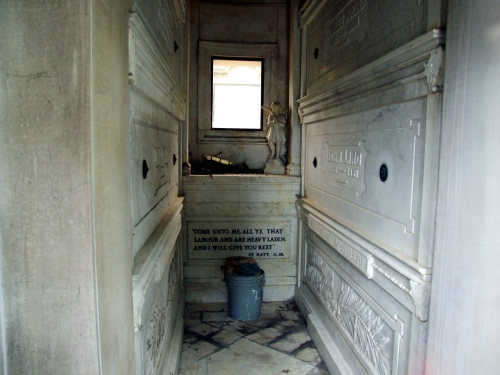

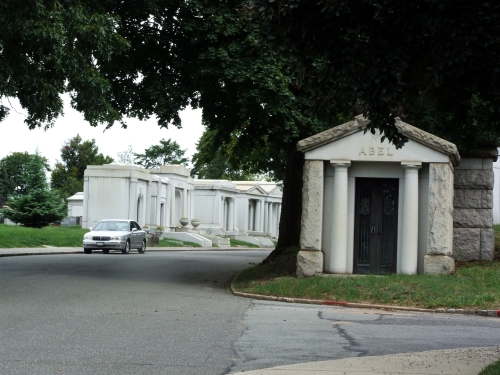
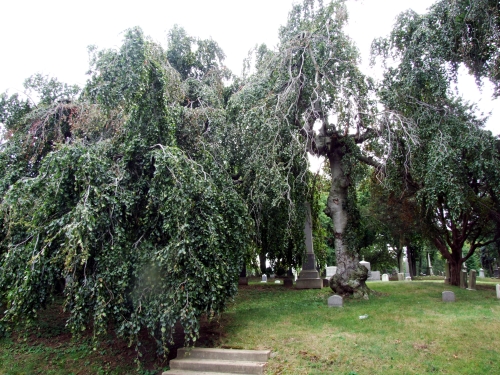
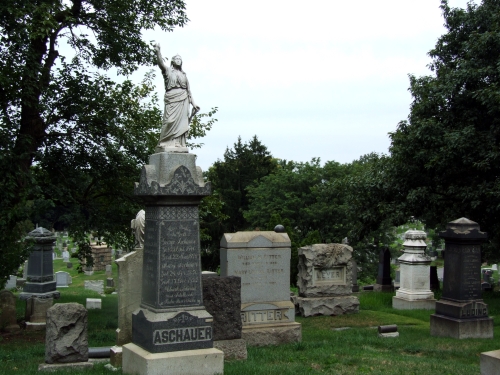
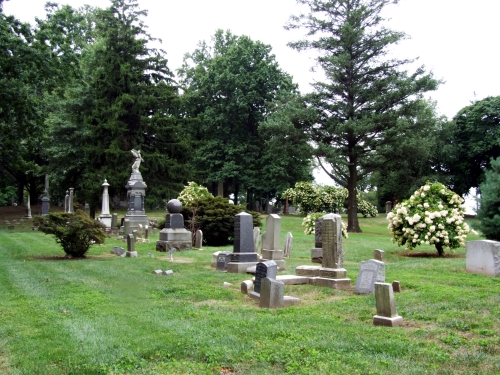
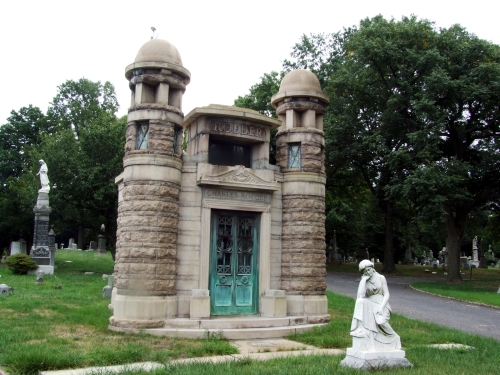
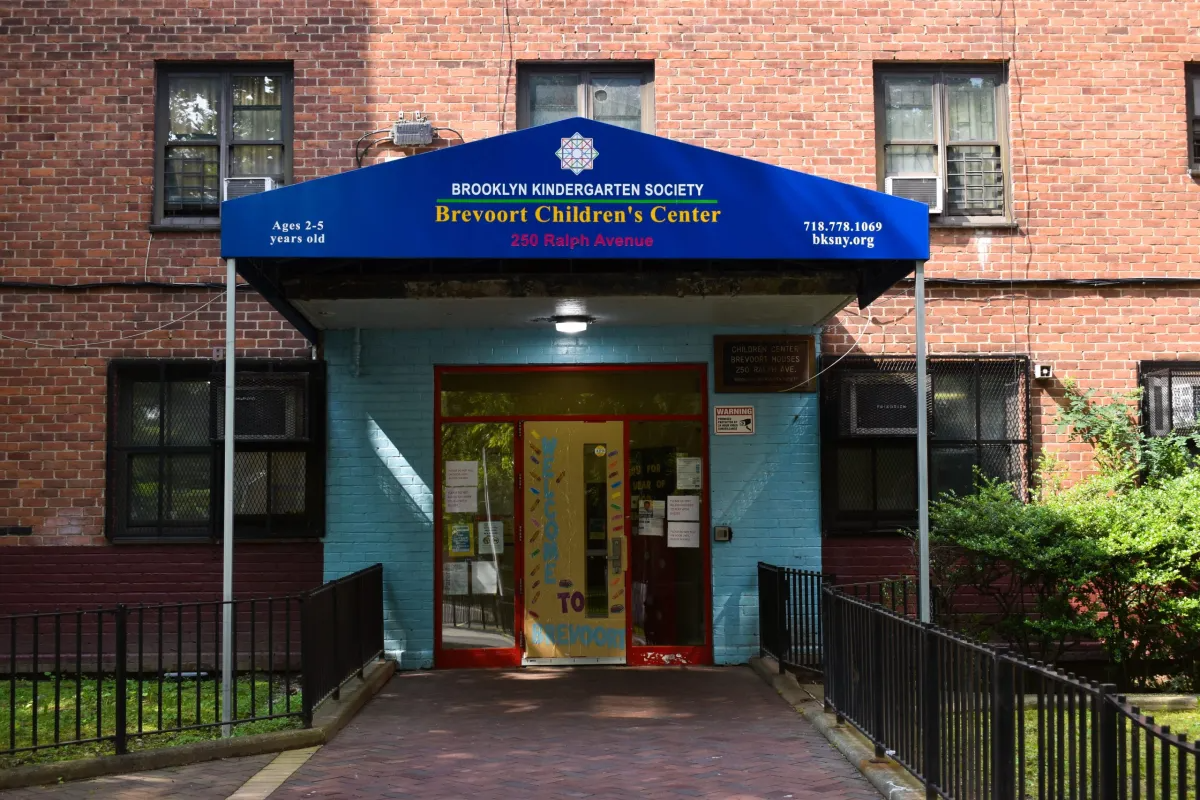
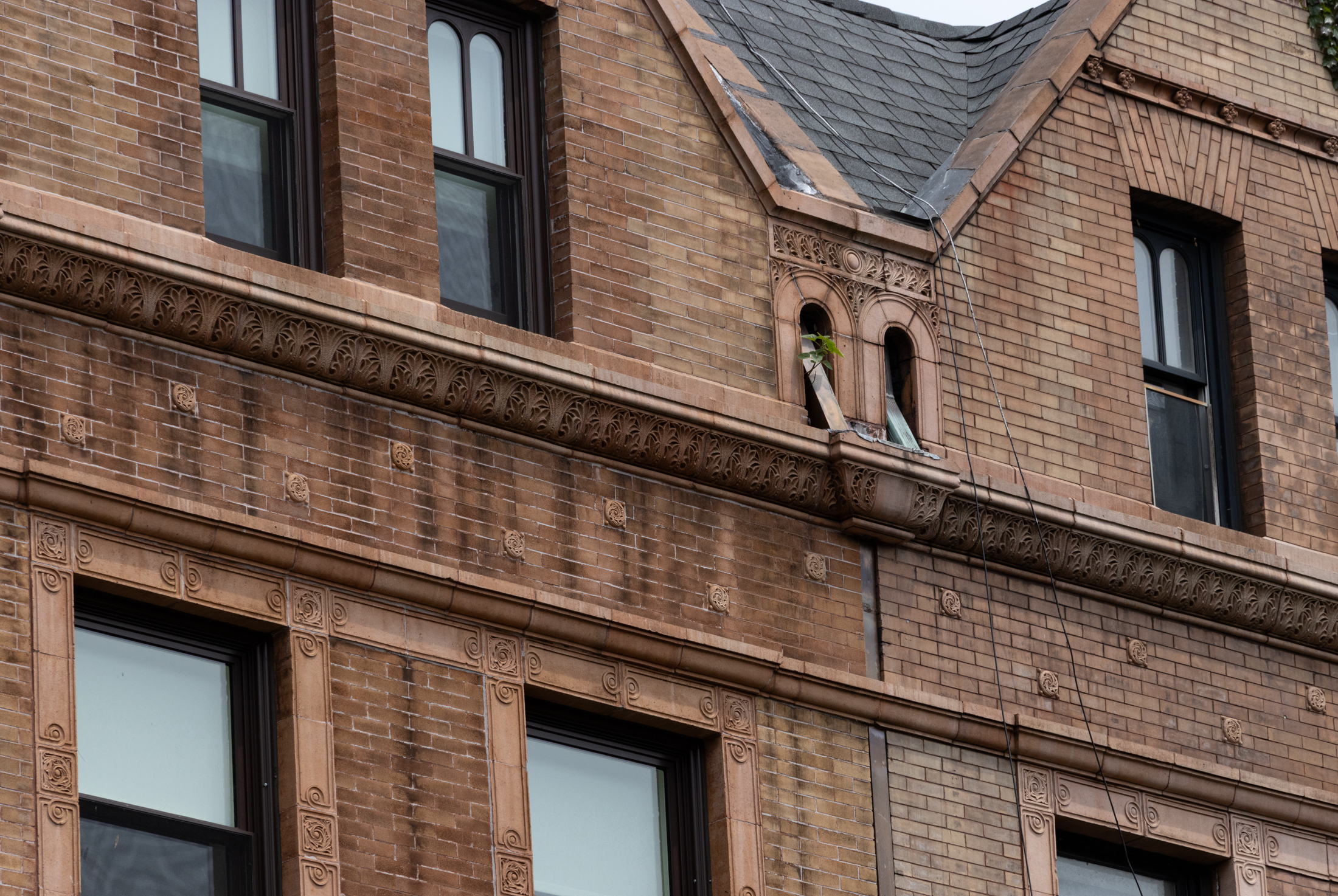
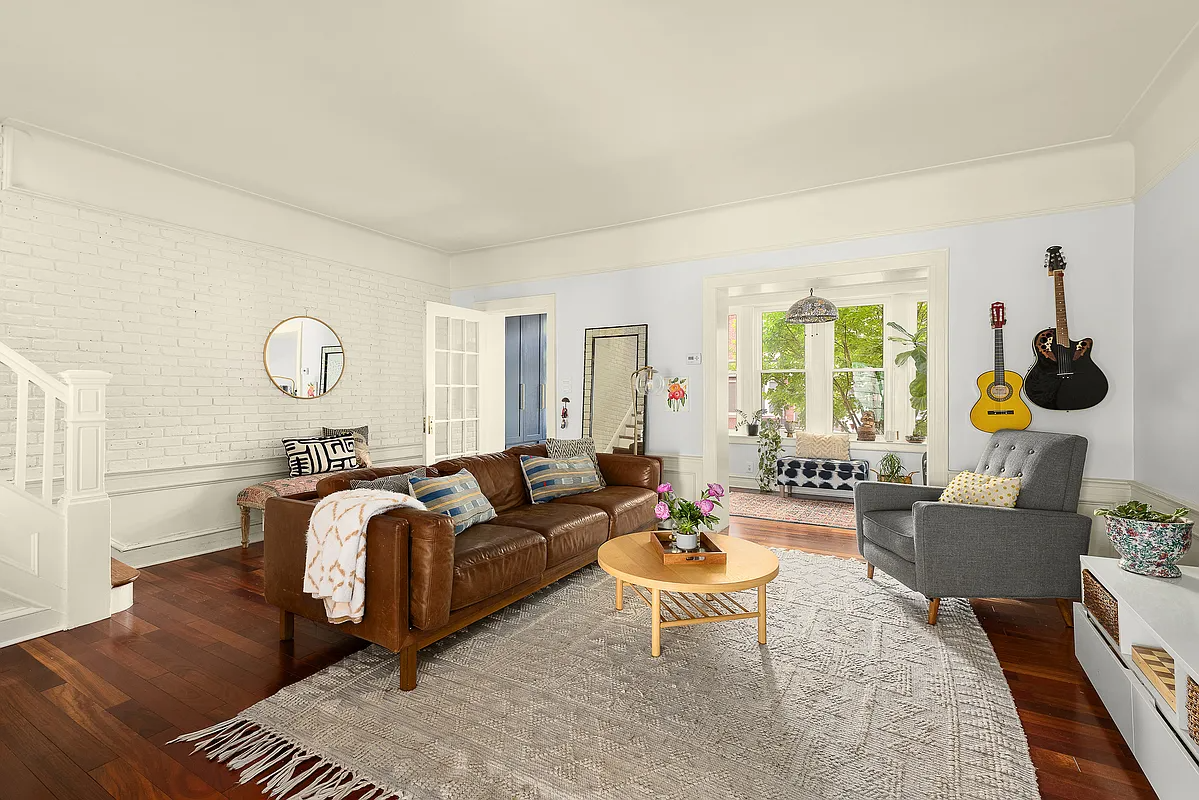
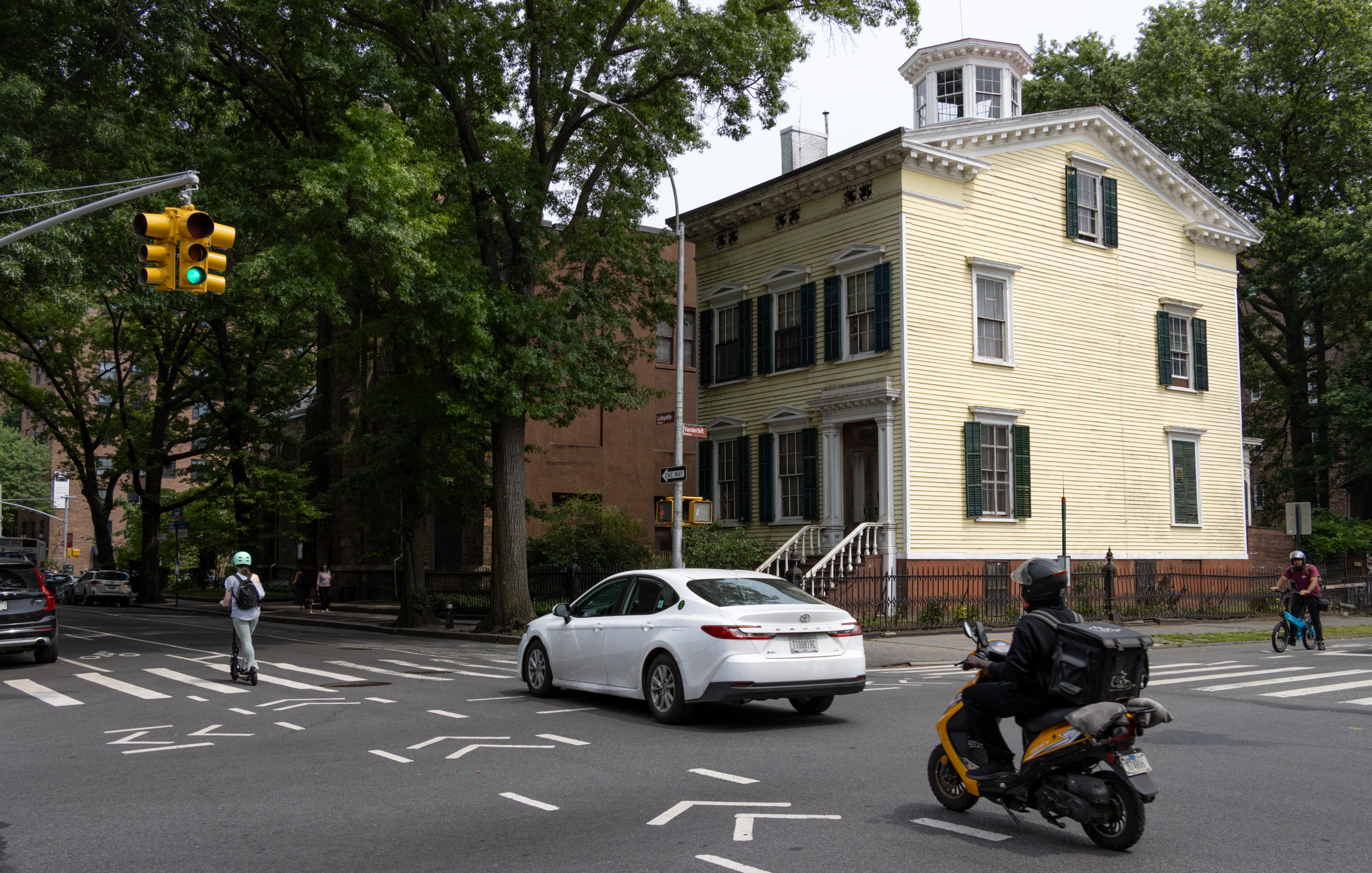
What's Your Take? Leave a Comment